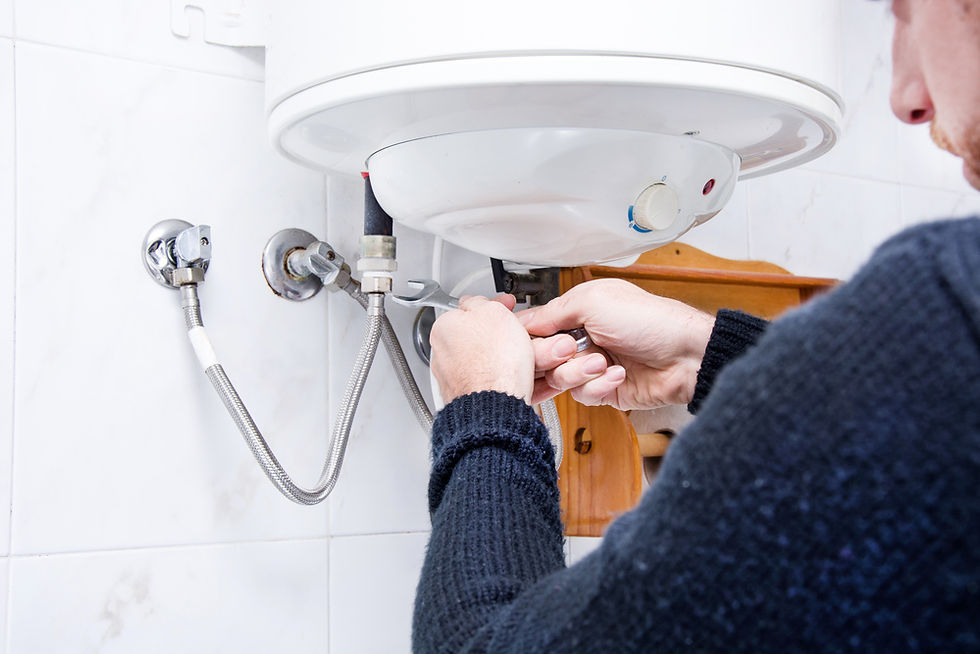5 Mistakes To Avoid When Installing A Water Heater
- San Diego Plumbers

- Mar 15, 2022
- 3 min read
Updated: Apr 27, 2022
When your water heater leaks, it can be a major inconvenience. But with the right tools and knowledge, you can fix it yourself and get back to enjoying hot water in no time. In this blog post, we'll walk you through the steps of repairing a water heater. We'll also highlight some of the most common problems that can occur with this appliance, and provide tips for preventing them. So whether you're a seasoned DIY-er or just starting out, read on for all the information you need to know about repairing a water heater.

Installing a new water heater can be a daunting task, but with careful planning and execution it can be a relatively easy project. In this blog post we will walk you through the basics of installing a water heater, including what tools you will need and some tips to make the process go smoothly. With just a little time and effort you can have a new water heater up and running in no time.
When you're installing a new water heater, there are a few things you need to avoid to ensure everything goes smoothly. Here are five of the most common mistakes people make when installing a water heater:
1. Not reading the installation instructions thoroughly
It's important to read the installation instructions carefully before starting work. This will help ensure that you don't make any mistakes and that your water heater is installed correctly.
2. Installing the water heater in the wrong place
The water heater should be installed in an area where it can easily be accessed for repairs and maintenance. It's also important to make sure that it's installed in a well-ventilated area, otherwise, it may not function properly.
3. Not installing the water heater properly
If the water heater isn't installed properly, it could leak or explode. Make sure you follow the installation instructions carefully to ensure a safe and correct installation.
4. Connecting the water heater incorrectly
If you don't connect the water heater correctly, it may not work properly. Make sure all the hoses and fittings are connected correctly and that there are no leaks.
5. Not checking the water pressure
Before turning on the water heater, make sure you check the water pressure. If the water pressure is too high or too low, it could damage the water heater.
These are just a few of the mistakes people make when installing a water heater. By avoiding these mistakes, you can ensure a safe and successful installation.

One of the most important pieces of equipment in your home is the water heater. A water heater that is not functioning properly can lead to a number of problems, including a decrease in water pressure and an increase in your utility bills. If you are experiencing any problems with your water heater, it is important to have it repaired as soon as possible. Here are a few tips on how to repair a water heater.
In order to properly repair a water heater, you will need to identify the source of the problem. There are a number of things that can go wrong with a water heater, and each one will require a different solution. Some common problems include insufficient heating, leaking water, and rusting metal. Once you have identified the source Leaks from your water heater can be a big problem, both for your wallet and the environment. Here are some tips on how to repair a water heater and get it back up and running.
Conclusion paragraph:
If you are in the market for a new water heater, be sure to avoid these five mistakes. Not only will they save you time and money, but they could also prevent potential safety hazards. If you’re ready to install your new water heater, contact our team of experts at L&S Turnkey today. We would be happy to walk you through the process and answer any questions you may have.
Author Bio:- Josephine Floyd
Josephine Floyd is a marketing head at L&S Turnkey. He is an experienced marketing leader with over 12 years of experience in the plumbing industry. With extensive knowledge of severe water damage, mold damage, and fire damage, as well as general plumbing services, he writes articles about water and flood damage repair and restoration along with heating installation, maintenance, and repair to make readers aware of the potential risk and quick actions they can take to reduce damage. Keep reading his latest articles to have an understanding of whether your plumbing system is intact or not; if not, what you should do to fix it.




Comments